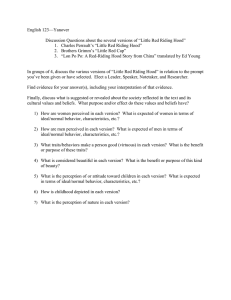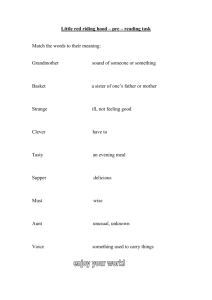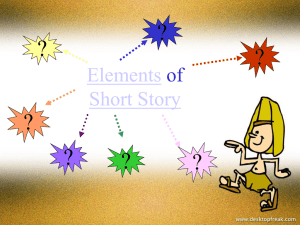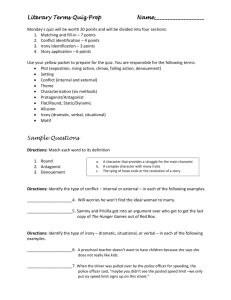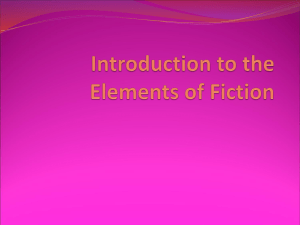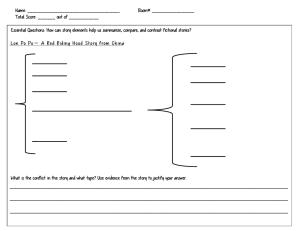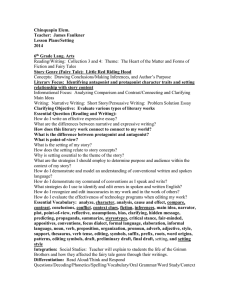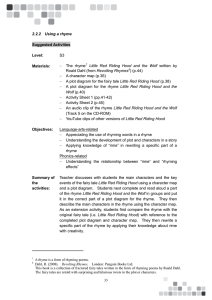Document 14252222
advertisement
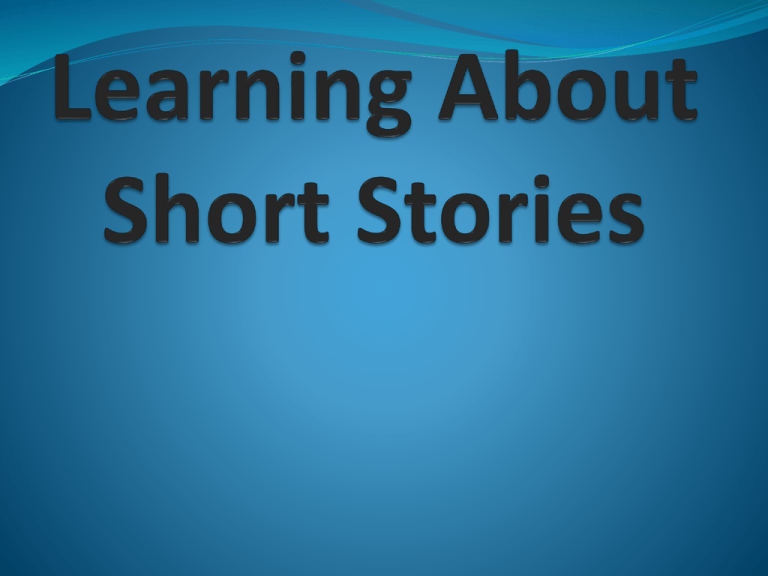
Characters: The people or animals who take part in a story’s action. Example: In the story “Little Red Riding Hood”, the wolf is a character. Characterization: The way a writer reveals a character’s personality and qualities. Example: In “Little Red Riding Hood”, Red describes the wolf by saying he has big teeth. Types of Characterization Direct Characterization: the writer describes the character. Example: In “Little Red Riding Hood”, the author says, “Once upon a time there was a dear little girl who was loved by everyone who looked at her…” The author is giving us information about Little Red Riding Hood in this sentence. Indirect Characterization The writer reveals the character through speech and actions. Example: In “Little Red Riding Hood,” the wolf is crafty when he distracts Red from going to her Grandma’s house: “See, Little Red Riding Hood, how pretty the flowers are about here - why do you not look round?” Theme The central message expressed in a story. What do you think the theme of “Little Red Riding Hood” is? Universal Theme A message about life that is expressed in different cultures and time periods. Examples: Hard work always pays off in the end. Youth can often see what adults cannot. Plot The sequence of events in a short story. It is usually divided into five parts. Exposition: introduces the setting – the time and place of the story, the characters, and the basic situation. Rising Action: introduces the conflict, or problem. Climax: the turning point of a story. Plot Falling Action: The part of the story where the conflict lessens. Resolution: The story’s conclusion. Instructions for Plot Map
